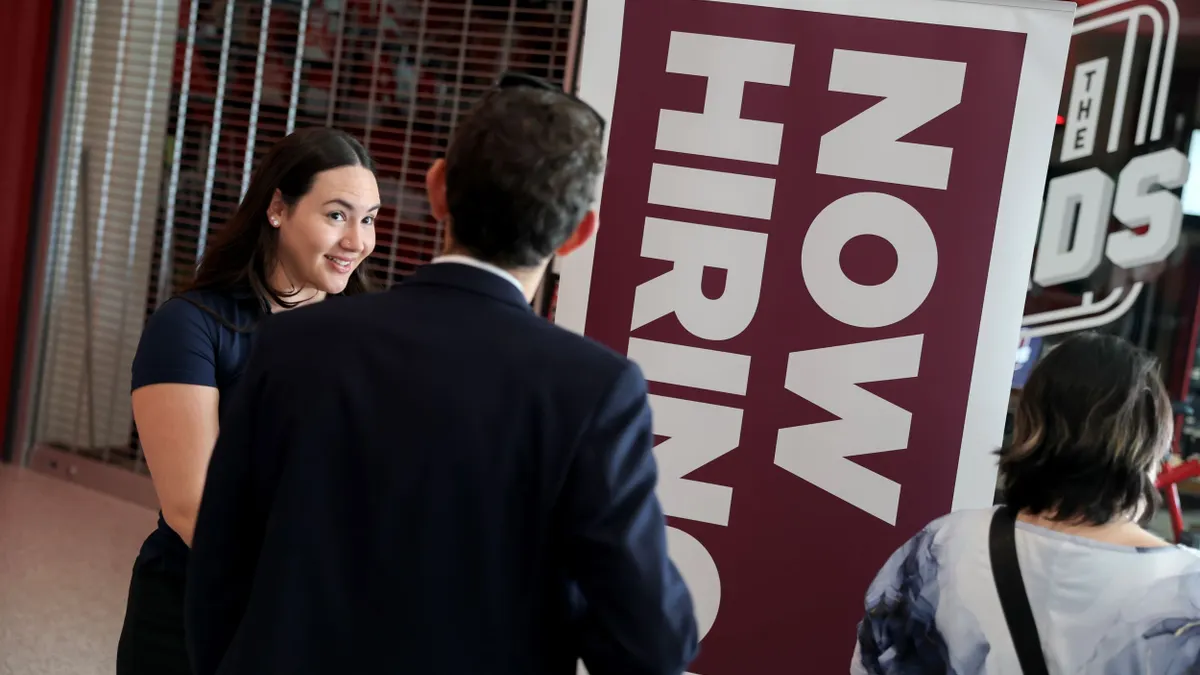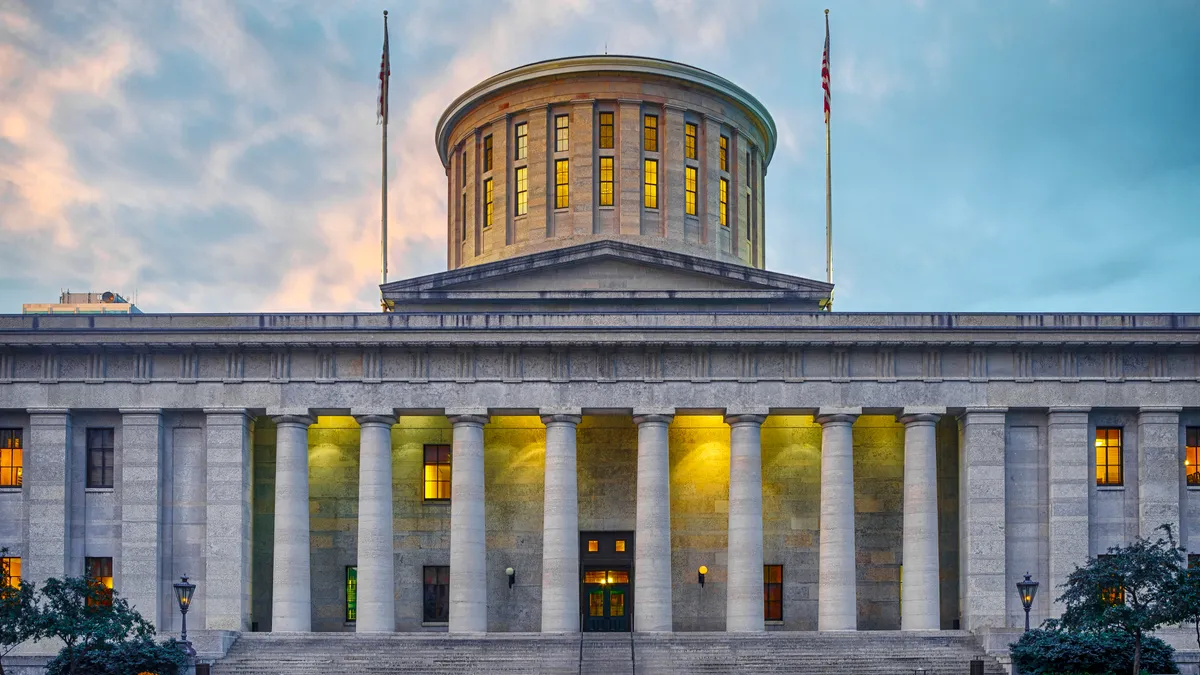Dive Brief:
- U.S. employers announced 153,074 job cuts in October, up 175% compared with the year-earlier period, driven in part by artificial intelligence-driven automation, outplacement firm Challenger, Gray & Christmas said in a report released Thursday.
- Cost-cutting was the top reason given for private-sector job reductions last month, while AI was the second-most cited factor. The technology industry continues to lead in private-sector job cuts as companies restructure amid AI integration, slower demand and “efficiency pressures,” according to the research.
- “Some industries are correcting after the hiring boom of the pandemic, but this comes as AI adoption, softening consumer and corporate spending, and rising costs drive belt-tightening and hiring freezes,” Andy Challenger, chief revenue officer at the Chicago, Illinois-based outplacement firm, said in the report.
Dive Insight:
Federal Reserve Board Chairman Jerome Powell said last week that Fed policymakers are “very carefully” watching as AI increasingly becomes a factor in corporate job cuts.
“It could absolutely have implications for job creation,” he said at a press conference after the Fed announced a new interest-rate cut citing softness in the labor market. “We don't really see it in the initial claims data yet.”
From January through October, U.S. employers announced a total of 1.1 million job cuts, the highest level year-to-date since 2020 when 2.3 million cuts were announced during the same 10-month period, according to the Challenger report. Last month’s level is up 183% from the 54,064 job cuts announced in September.
“Those laid off now are finding it harder to quickly secure new roles, which could further loosen the labor market,” Challenger’s revenue chief said.
IBM plans to cut thousands of jobs during the fourth quarter, CFO Dive sister publication CIO Dive reported Wednesday.
“In the fourth quarter we are executing an action that will impact a low single-digit percentage of our global workforce,” the company said in a statement emailed to CFO Dive. “While this may impact some U.S.-based roles, we anticipate that our U.S. employment will remain flat year over year.”
IBM employed 270,000 people as of Dec. 2024, according to its most recent annual report.
Meanwhile, Amazon announced last month that it was slashing as many as 14,000 roles across its workforce.
“Some may ask why we’re reducing roles when the company is performing well,” Beth Galetti, senior vice president of people experience and technology at Amazon, said in an Oct. 28 message to Amazon employees that was later posted on the company’s website. The company is “innovating at a rapid rate,” Galetti explained.
“This generation of AI is the most transformative technology we’ve seen since the Internet, and it's enabling companies to innovate much faster than ever before (in existing market segments and altogether new ones),” she added. “We’re convinced that we need to be organized more leanly, with fewer layers and more ownership, to move as quickly as possible for our customers and business.”
Amazon CEO Andy Jassy came under fire over the summer after he said in an internal memo that was eventually made public that he expects AI to reduce his company’s workforce in the next few years.
An Amazon spokesperson said AI is not the reason behind “the vast majority” of job reductions announced last week.
“Last year, we set out to strengthen our culture and teams by reducing layers, increasing ownership, and helping reduce bureaucracy to drive speed and ownership, and be set up to invent, collaborate, be connected, and deliver the absolute best for customers,” the spokesperson said in an email. “This effort has begun to pay off, and we’re seeing strong results for our teams and customers.”
Besides Amazon, other companies that announced massive layoffs in October include Target, Paramount, United Parcel Service and Charter Communications, according to news reports.
The Department of Government Efficiency has been the leading driver of job cuts this year, cited in 293,753 layoff announcements through October, according to the Challenger report. This includes direct reductions to the federal workforce and its contractors.
Among private sector employers, cost-cutting was the top reason cited for job reductions, responsible for 50,437 announced layoffs. AI was the second-most cited factor in the private sector, leading to 48,414 job cuts this year.
Occupations that have heavily adopted AI in recent years have experienced substantial unemployment increases, according to a study by researchers at the Federal Reserve Bank of St. Louis released in late August.
“Our results suggest we may be witnessing the early stages of AI-driven job displacement,” the authors wrote.














